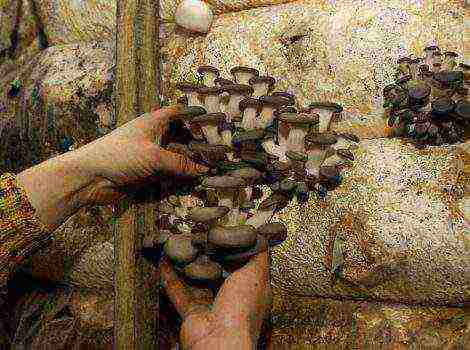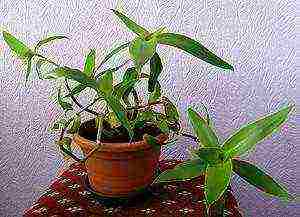Content
- 1 The origin and appearance of gerbera
- 2 Conditions for gerbera in different seasons - table
- 3 Features of planting and transplanting
- 4 Flower care
- 5 Diseases and pests, signs and control measures - table
- 6 Reproduction methods
- 7 Florist reviews about growing room gerbera
- 8 Description of the plant
- 9 How to grow a gerbera in a flower bed
- 10 How to grow gerbera indoors
- 11 How to prolong flowering in a bouquet
- 12 How to care for indoor gerberas?
- 13 Reproduction of room gerbera at home
- 14 The main problems in growing
- 15 Diseases and pests of gerbera

Gerberas appeared in Russia at the end of the 18th century. At first, they did not cause much enthusiasm among our compatriots. Gardeners considered this chamomile-like flower too bright and even annoying. However, now the gerbera is inferior in popularity only to the queen of flowers. How to grow indoor gerbera at home?
The origin and appearance of gerbera
Gerbera is a perennial from the Aster family. In nature, it grows in South Africa and the tropics of Asia. This plant was first described by Dutch scientists at the beginning of the 18th century.
The flower was named after the German botanist T. Gerber. There is also another variant of the origin of the name: from the Latin word "coat of arms", which means "grass".
This plant is thermophilic, so it can grow outdoors only in hot countries. In colder climates, gerbera is grown in greenhouses or at home.
The roots of the plant are powerful. Light green leaves are located on short stems, combined into a rosette. The peduncle is high (up to 60 cm in height), pubescent. Gerbera flowers are chamomile-like inflorescences-baskets, the diameter of which reaches 12 cm. They are located on single peduncles.
Cut flowers tolerate transportation well and stay in a vase for up to 3 weeks. Gerbera occupies one of the first places in terms of the number of sales, so the cultivation of these plants is a whole industry.
Varieties and hybrids
There are dozens of gerbera species on sale now. For growing at home, undersized (up to 25 cm) hybrids were bred. Gerberas differ from each other in the size of the flower, the width of their petals, and also in color (it can be orange, white, yellow, red, burgundy, pink). There are varieties with striped flowers, variegated tips, strokes.
Most gerberas are derived from Jamson's green leaf and gerbera.
- Gerber Jameson (Jameson). The stem reaches 60 cm in height, the length of the leaves is 15 cm. It begins to bloom in August. Flowers are yellow, red, orange, white with a yellowish center.
- Mini.Convenient for breeding at home - their height does not exceed 30 cm.The color range is also varied.
- The festival. The most common species, well suited for home cultivation. Large flowers and short stems are characteristic.
- Green-leaved gerbera. The original species, from which all the others originate, is a plant with narrow-leaved, pale pink inflorescences.
- Gerber Wright. These flowers prefer open ground in warm climates or ideal greenhouse conditions.
Gerbera Jameson and other varieties - gallery
How to grow and how to care for a room gerbera - video
Conditions for gerbera in different seasons - table
Gerbera needs bright diffused light
Features of planting and transplanting
If the newly purchased gerbera is in bloom, then you need to replant it after the end of flowering. If there are no flowers on the plant, transplanting is recommended no earlier than 2 weeks after the "move" - the flower should get used to the new conditions.
Composing soil
Soil for growing gerbera must be used with an acidity of 5.5-6.0, does not tolerate humus and compost. It is recommended to select soil from:
- leafy land (2 parts);
- peat (1 part);
- sand and perlite (1 part).
You can add pine bark, cut into small pieces, or expanded clay.
Gerbera transplant workshop
Healthy adult gerberas are transplanted no more than 1 time in 2 years in early spring.
- For the transplant, you will need an air-permeable clay pot with drainage holes, with a volume of 1–1.5 liters, the diameter of which is 2–3 cm larger than the previous one.
- A drainage layer (for example, expanded clay) of 1–2 cm is laid at the bottom of the tank.
Gerbera requires drainage at the bottom of the pot
- The soil suitable for gerbera is slightly acidic. Composition: leafy soil, peat, sand (2: 1: 1). There should be no humus or compost.
Soil composition for gerbera: leafy soil, peat, sand
- When taking out the gerbera from the old pot, it is necessary to very carefully shake off the soil from the root, move the plant to a new container and sprinkle with fresh soil. The root collar must remain above the ground.
When planting, gerberas are taken out of the ground and the roots are carefully cleaned of it.
- Drizzle with warm water.
How to transplant a gerbera at home after purchase - video
Flower care
Watering and feeding are important points in caring for a gerbera.
How to properly water the transvaal chamomile?
The soil should not dry out, however, the plant will not tolerate waterlogging. Excessive amounts of water will provoke fungal diseases.
Water for irrigation needs soft, settled and warm (temperature not lower than 20 ° C). You need to pour it at the edge of the pot so that moisture does not get into the outlet. You can also add water to the pan, and after 0.5 hours, drain the remaining liquid.
Top dressing
Organic gerbera is not suitable. The flower is fed 2-3 times a month with complex mineral fertilizers: moreover, during the growth of leaves (in spring and early summer), fertilizing with a high nitrogen content is used, and during flowering - with potassium. Another feature is that you need to dilute the solution more strongly than the instructions suggest.
The first 3 weeks after transplanting the gerbera do not need to be fertilized.
For feeding gerberas, a complex mineral fertilizer is used.
Flowering period of the plant
In the first year of life, the plant gives about 15 flowers, in the second - up to 30. By 3-4, the flowering decreases, the bush must be replaced with a young plant.
Gerbera blooms depend on how much light it receives. The daylight hours that she needs are no more than 12 hours.
There are frequent cases when gerbera grows leaves in summer, and blooms profusely in August-November.
During flowering, a large temperature difference between night and day is not allowed.
When the flowers wither, they should not be cut off, but carefully broken off, because even a small part of the peduncle can cause the plant to rot.
Why doesn't gerbera bloom?
Flowering problems can occur in the following cases:
- the plant is overfed with nitrogen-containing fertilizers;
- a very large pot (in this case, the gerbera grows roots, and does not prepare for flowering);
- the plant is more than 4 years old;
- too long daylight hours (more than 12 hours);
- the required green mass is not enough.
How to ensure a dormant period at home?
The plant can bloom in winter, but this requires additional lighting and a temperature of at least 20 ° C. However, flower growers do not recommend exploiting the gerbera all year round, as this depletes the flower. Gerbera needs rest to accumulate strength for the new season. During the rest period, watering is reduced, and feeding is stopped. The temperature is lower than in summer - about 14 ° C.
In mid-February, you can start feeding, increase watering. Thus, the plant is "awakened", it begins to actively grow, preparing for flowering.
Care errors and solutions to problems - table
Diseases and pests, signs and control measures - table
Gerbera pests and diseases in the photo
Reproduction methods
Gerbera is propagated by seeds, dividing a bush or cuttings.
Seeds
Seed packs can be purchased at specialized stores. It should be taken into account that Gerbera retains good germination for only 7–8 months. However, flowers grown from seeds do not always retain the properties of mother plants. Even the shade of the inflorescences may differ from what is indicated on the bag.
- In late winter - early spring, sow the seeds in a light soil mixture (leaf soil, sand, peat, perlite). Embedding depth - 2-3 mm. The optimum temperature is not lower than 18 ° C.
- Seedlings should appear in 1-2 weeks.
- Open the seedlings after 2-3 true leaves appear.
- After the appearance of 4–5 leaves, young plants should be cut open again and transplanted into separate containers.
It will take about 10 months from sowing seeds to the beginning of flowering gerbera
By dividing the bush
A suitable age for a gerbera bush for dividing is 3-4 years. To reproduce in this way:
- Divide the bush into parts with 2-3 points of growth.
- The roots are pruned to 10 cm, processing the cuts with crushed charcoal.
- The divisions are planted in the substrate, placing the outlet above the ground by 1.5-2 cm.
The divided plant will begin to bloom no earlier than 10 months later.
Each separated plant should have 2-3 growth points
By cuttings
For propagation, a plant older than 1 year with a well-formed rhizome is required.
- In the spring, when the gerbera starts to grow, they take out the mother bush along with a lump of earth from the pot.
- The rosette is rinsed and carefully trimmed.
- The rhizome is planted in a greenhouse in a loose earthy mixture with a temperature of about 23 ° C. Slices should be 5 cm from the ground.
- After 1–1.5 weeks, young shoots will appear from the axillary buds. They are cut with a sharp knife with part of the root.
- Cuttings are planted in a loose peat substrate, moistened and covered with a transparent cap.
- Landings are provided with lower heating up to 25 ° C.
- After a month, the rooted cuttings are planted in separate containers.
If cuttings are carried out in March-April, then the new plant will bloom in the second half of the year. With summer breeding, flowering will occur only in the next season.
Florist reviews about growing room gerbera
Gerbera can seem like a pretty whimsical plant. However, knowledge and proper care can lead to excellent results. Flowering is very beautiful, it is achieved by choosing the right soil, regular watering and providing the right amount of light.
I never cease to be convinced that life is beautiful. Rate the article:
(0 votes, average: 0 out of 5)
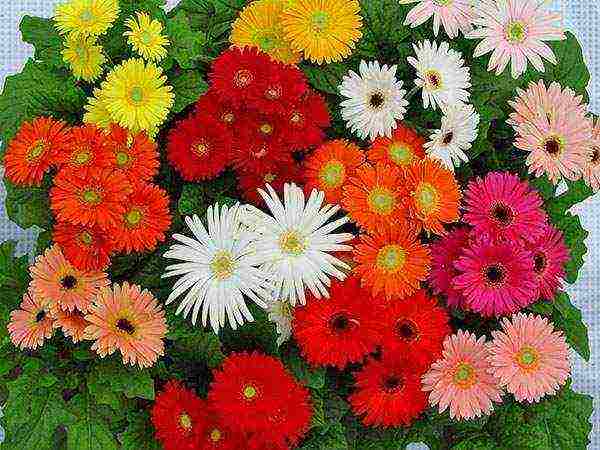 Gerberas are the favorite plants of flower growers, and there are many confirmations of this. They bloom for a long time with fantastically clear and bright colors.In the palette of shades, only blue tones are missing (although it is easy to find them on sale). Beautiful large flowers with contrasting color centers rest on strong, long, bright green stems. Blooming flowers are extremely hardy and can stand in water for up to three weeks. All this makes the gerbera one of the best in the cut culture after roses, carnations, tulips and chrysanthemums. Many amateur and artistic photographs of gerberas confirm this fact.
Gerberas are the favorite plants of flower growers, and there are many confirmations of this. They bloom for a long time with fantastically clear and bright colors.In the palette of shades, only blue tones are missing (although it is easy to find them on sale). Beautiful large flowers with contrasting color centers rest on strong, long, bright green stems. Blooming flowers are extremely hardy and can stand in water for up to three weeks. All this makes the gerbera one of the best in the cut culture after roses, carnations, tulips and chrysanthemums. Many amateur and artistic photographs of gerberas confirm this fact.
But in recent years, this bright beauty has become popular as a houseplant.
Description of the plant
 Gerbera belongs to the genus of perennial grasses from the Astrov family. Most of the species are native to Africa and tropical Asia. Its flowers are similar to a large chamomile and in English-language literature they are called "transvaal chamomile". Elongated leaves are collected in a basal rosette. Peduncles are tall, strong, have no leaves.
Gerbera belongs to the genus of perennial grasses from the Astrov family. Most of the species are native to Africa and tropical Asia. Its flowers are similar to a large chamomile and in English-language literature they are called "transvaal chamomile". Elongated leaves are collected in a basal rosette. Peduncles are tall, strong, have no leaves. The flowers are a basket inflorescence. Their sizes in some varieties reach 30 cm. Elegant giants bloom for 3-4 months. Seeds remain viable for a very short time - about 6 months, so when buying seeds, you need to monitor both the expiration date and the time of their collection.
The flowers are a basket inflorescence. Their sizes in some varieties reach 30 cm. Elegant giants bloom for 3-4 months. Seeds remain viable for a very short time - about 6 months, so when buying seeds, you need to monitor both the expiration date and the time of their collection.
How to grow a gerbera in a flower bed
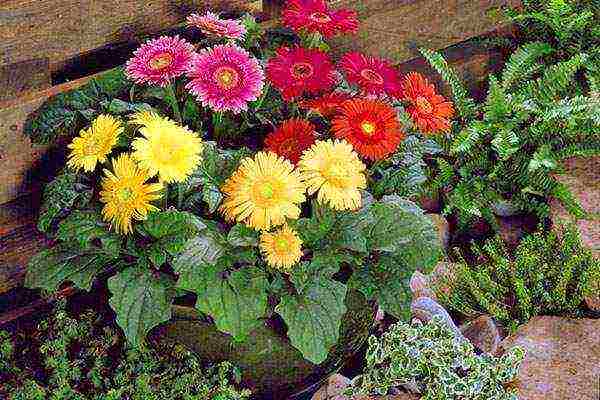 Growing a gerbera in the garden and caring for it is simple and fun, but requires compliance with the conditions necessary for a long and lush flowering.
Growing a gerbera in the garden and caring for it is simple and fun, but requires compliance with the conditions necessary for a long and lush flowering.
 In southern Russia, gerbera blooms from spring to autumn and hibernates without shelter without any problems. In the middle lane, the flowering will be more modest, and for the winter the gerbera will have to be dug up and stored with a lump of earth in a cool, dry place.
In southern Russia, gerbera blooms from spring to autumn and hibernates without shelter without any problems. In the middle lane, the flowering will be more modest, and for the winter the gerbera will have to be dug up and stored with a lump of earth in a cool, dry place.
In areas with mild warm winters, gerberas are covered with leaf litter and covering material, dispensing with digging.
Gerbera planting
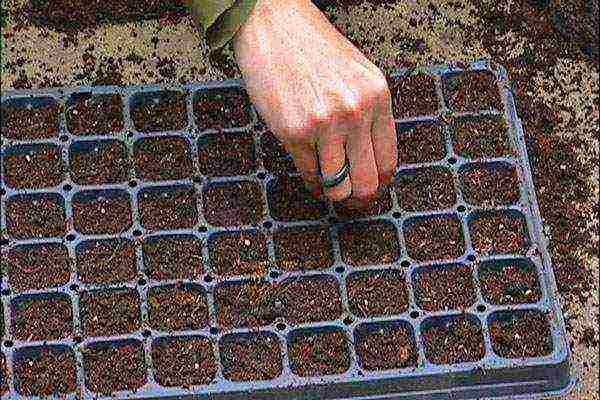 Planting and following garden gerbera daisies begins at the end of winter. The plant is grown in seedlings. Seeds are sown in seedling containers from January to March in a mixture of garden soil with sand and compost. The seeds are covered very shallowly, only slightly sprinkling with earth. Seedlings, as a rule, are uncooperative and appear in 10-12 days.
Planting and following garden gerbera daisies begins at the end of winter. The plant is grown in seedlings. Seeds are sown in seedling containers from January to March in a mixture of garden soil with sand and compost. The seeds are covered very shallowly, only slightly sprinkling with earth. Seedlings, as a rule, are uncooperative and appear in 10-12 days.
When sowing seeds for seedlings, it is necessary to take into account their low germination and increase the seeding rate.
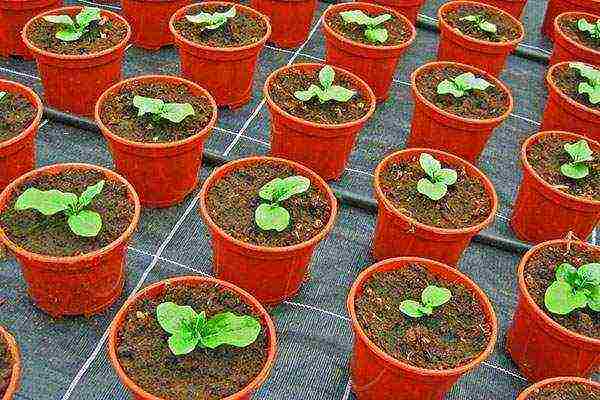 After the appearance of several true leaves, the sprouts are planted in boxes or immediately in separate pots. The lightest window sills are chosen for seedlings. Seedling care consists in regular moderate watering.
After the appearance of several true leaves, the sprouts are planted in boxes or immediately in separate pots. The lightest window sills are chosen for seedlings. Seedling care consists in regular moderate watering. 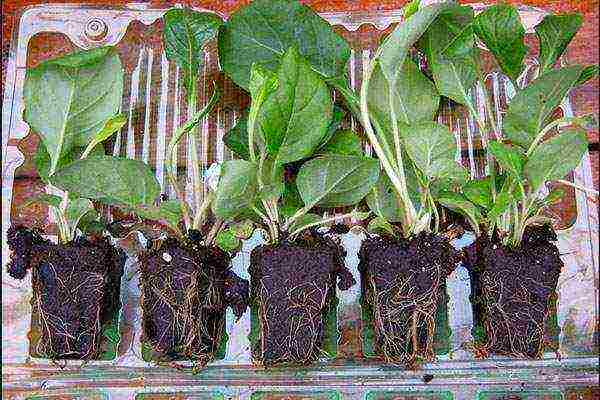 When watering, water should not get into the root outlet, as the plant rots easily. Excessive watering threatens the appearance of thrips on the surface of the earth. In this case, both the plant and the soil surface are treated with Fitoverm.
When watering, water should not get into the root outlet, as the plant rots easily. Excessive watering threatens the appearance of thrips on the surface of the earth. In this case, both the plant and the soil surface are treated with Fitoverm.
When propagated by seed, gerberas may not retain the color of their parent plants.
Outdoor Gerbera Care
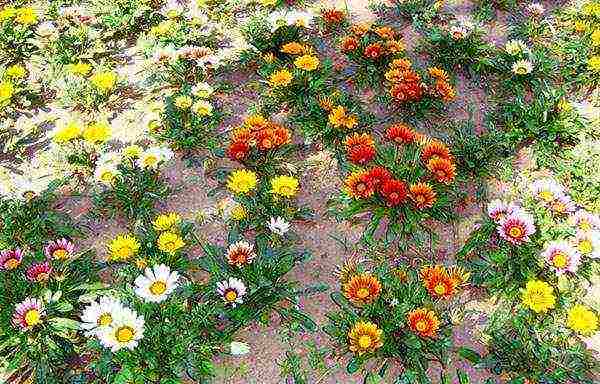 Gerbera seedlings are planted in open ground after the threat of frost disappears. This usually happens in the second half of May. Choose a sunny place for landing. The best soil for them is light, drained, with inorganic fertilizers applied.
Gerbera seedlings are planted in open ground after the threat of frost disappears. This usually happens in the second half of May. Choose a sunny place for landing. The best soil for them is light, drained, with inorganic fertilizers applied. 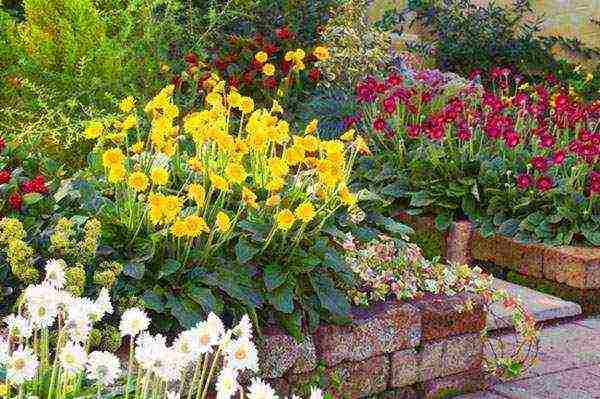 With an excess of organic matter in the ground, the peduncles are strongly stretched. Fading inflorescences must be removed in a timely manner. This stimulates the emergence of new ovaries. During active growth and flowering, the gerbera is watered abundantly, preventing water from entering the outlet. After flowering, the soil is moistened only after the earthen coma has dried.
With an excess of organic matter in the ground, the peduncles are strongly stretched. Fading inflorescences must be removed in a timely manner. This stimulates the emergence of new ovaries. During active growth and flowering, the gerbera is watered abundantly, preventing water from entering the outlet. After flowering, the soil is moistened only after the earthen coma has dried.
In autumn, the gerbera is covered or dug up with a clod of earth. The shelter is made dry and ventilated so that the flower does not rot during the thaw.
If there is a possibility of freezing, it is better to dig it up and store it in the basement or on a glazed veranda at a temperature of 7-8 ° C.
 In the spring, the gerbera is transferred into a pot that is suitable in size, transferred to a warmer and lighter place, and watering is increased. In late April - early May, an adult plant is planted in open ground.
In the spring, the gerbera is transferred into a pot that is suitable in size, transferred to a warmer and lighter place, and watering is increased. In late April - early May, an adult plant is planted in open ground.
Overwintered gerberas do not need to be transplanted to the flower bed.Leave them in pots to decorate seating areas, gazebos, veranda, porch. Without a transplant, plants get sick less and begin to bloom earlier. Do not forget to feed them with complex mineral fertilizers.
How to grow gerbera indoors
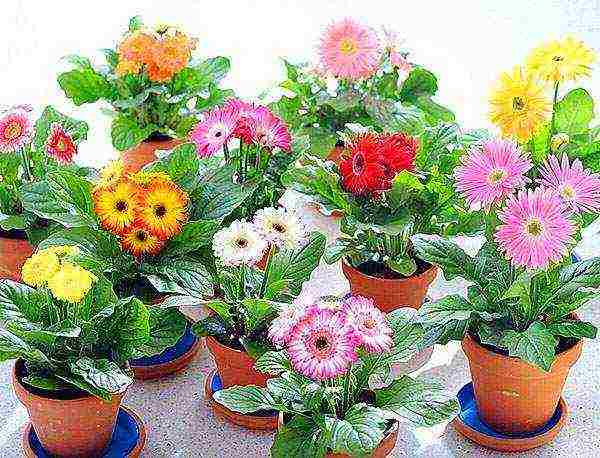 For growing in indoor conditions, dwarf species of Jameson's gerbera are chosen. They are sold in bouquets in flower shops. Having received an adult gerbera plant from seeds at home through seedlings, it is kept on the east and west windows. On the south side, it is shaded at noon. For better flowering, they maintain a temperature of 22-24 ° C and try to prevent its strong drops in day and night values.
For growing in indoor conditions, dwarf species of Jameson's gerbera are chosen. They are sold in bouquets in flower shops. Having received an adult gerbera plant from seeds at home through seedlings, it is kept on the east and west windows. On the south side, it is shaded at noon. For better flowering, they maintain a temperature of 22-24 ° C and try to prevent its strong drops in day and night values.
 At the end of flowering, the plant is transferred to a cooler place. How to properly care for a gerbera in winter? During the dormant period, the plant needs coolness and very moderate watering. In cold weather, the flower needs additional lighting.
At the end of flowering, the plant is transferred to a cooler place. How to properly care for a gerbera in winter? During the dormant period, the plant needs coolness and very moderate watering. In cold weather, the flower needs additional lighting.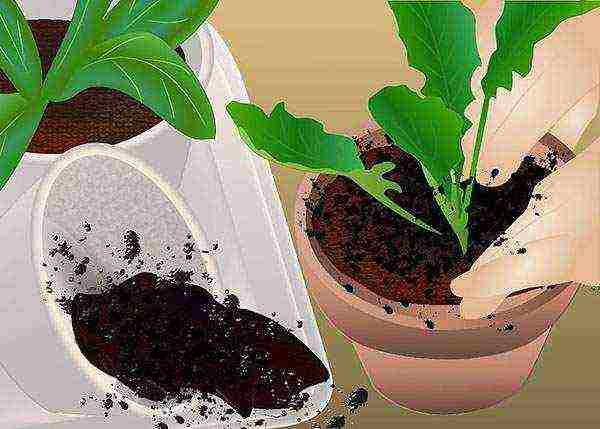
How to prolong flowering in a bouquet
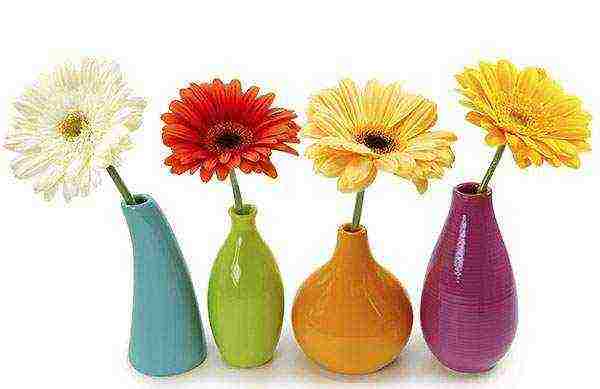 Having received a luxurious multi-colored bouquet as a gift, you probably wondered how to keep gerberas in a vase longer. In fact, cut gerbera is not capricious and phenomenally tenacious. Flowers can come to life, even if you had to walk with a bouquet all day.
Having received a luxurious multi-colored bouquet as a gift, you probably wondered how to keep gerberas in a vase longer. In fact, cut gerbera is not capricious and phenomenally tenacious. Flowers can come to life, even if you had to walk with a bouquet all day. 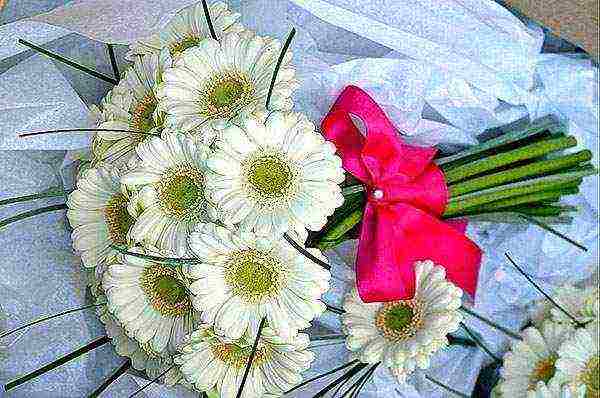 That is why they like to give gerbera compositions to brides - flowers will not lose their will to live for the whole day and will come to life before our eyes if you put the ends of the stems in water and support heavy heads. For such a procedure, a lattice is suitable, through the cells of which the stems are passed.
That is why they like to give gerbera compositions to brides - flowers will not lose their will to live for the whole day and will come to life before our eyes if you put the ends of the stems in water and support heavy heads. For such a procedure, a lattice is suitable, through the cells of which the stems are passed.
 To keep the bouquet in a vase, use the following guidelines:
To keep the bouquet in a vase, use the following guidelines:
- change the water every day;
- choose a tall and narrow vase so that the flowers do not bend under their own weight;
- pour water a few centimeters so that the stems do not rot;
- trim the softened ends of the stems before the next water change;
- cut the stems obliquely and make small punctures or longitudinal cuts at the bottom of the stem. This will help the water to be absorbed better.
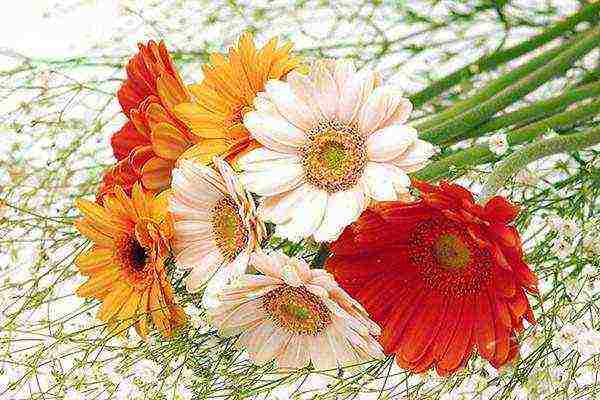 Subject to these simple conditions, a gerbera bouquet will delight you with fresh and bright flowers for up to three weeks.
Subject to these simple conditions, a gerbera bouquet will delight you with fresh and bright flowers for up to three weeks.
Gerbera transplant after purchase - video
Gerberas are bright inhabitants of window sills, which always delight the owners with rapid flowering. Indoor gerbera, home care for which is correct, multiplies well and maintains a constantly healthy appearance. Having learned the tricks of caring for a plant, you can always see bright flowers on your windowsill.
How to care for indoor gerberas?
Complex care of the gerbera is not required. The main thing is to know the basic requirements of the plant and provide it with conditions close to natural. To cope with this following the recommendations, even a novice florist can do it. In the conditions of the apartment, mainly the Jameson gerbera flower is bred.
Lighting and temperature control
Gerbera needs a lot of light, but at the same time, direct sunlight should not be allowed to fall on it. In the warm season, an ideal place would be a glazed balcony or loggia, which are well lit, but slightly shaded so that the flower does not get burned. In winter, the gerbera will need additional lighting. To do this, you can use ordinary fluorescent lamps or special phytolamps, the light spectrum of which is selected so as to stimulate the growth of the flower and make it stronger. The second option is preferable. The maximum length of daylight hours is 12 hours.

The room temperature for gerbera is very important.
It can grow normally, let alone bloom, it can only if the air is warmed up to 20-24 C. The flower does not tolerate heat well. It should not be placed very close to the battery.
Watering and feeding
A southern plant (gerbera native to South Africa) is demanding on moisture, so regular watering is necessary. The water must be at the same temperature as the air in the room. If you water a flower with cold water, then it will start to hurt and, most likely, die.

Excessive soil moisture will also not benefit the plant. If you pour the gerbera, then the leaves in the outlet will begin to rot. In addition, pest worms that are dangerous to the flower can easily grow in the soil. Water it along the edge of the pot so that water does not get into the outlet.
Depending on the season, fertilizing is carried out with various fertilizers.
In spring and summer, the plant is actively growing its green mass, and it needs fertilizing with nitrogen fertilization. It is necessary to dilute the product 2 times more than indicated in the instructions, otherwise it will harm the flower. When the gerbera blooms, potash fertilizers are used, which are also diluted in more water than indicated in the instructions. In winter, no top dressing is applied.
Soil requirements and replanting
Plant transplantation is required from time to time (once every 3 years), and you need to know exactly what soil is needed for gerbera. The soil for gerbera is nutritious.

In order for the plant to receive everything it needs, it is best to prepare the soil yourself, for which the following components are used:
- peat;
- leafy land;
- cleaned sand;
- sphagnum moss.
It is strictly forbidden to add humus or compost to the composition. To improve the quality of the soil, a complex mineral fertilizer is applied in a low concentration.
- The pot for the plant needs a new one so that it does not contain the spores of any pathogens that can easily lead to the death of the plant.
The flower pot needs to be spacious and with a pallet with a stand so that it does not come into direct contact with the bottom of the pot. - It is optimal to transplant the gerbera in February, when it is still dormant. The best way to transplant is transshipment while preserving the earthen clod on the roots. You cannot pick off or cut off the roots.
Reproduction of room gerbera at home

It is not so difficult to propagate an indoor gerbera, therefore, a novice florist can also cope with the task if the plant is in order. For reproduction, 3 methods are used.
Seeds
Seeds should be planted in loose soil in spring. The soil in the pot must be dry. Seeds are sown on it and then, sprinkling them with sand, moisten the soil with a spray bottle. The pot is then tightened with a plastic bag to create a greenhouse effect. The container with seeds should stand in a warm, bright place.
After seed germination, which occurs after about a week, the polyethylene is removed. Diving of seedlings is carried out in the phase of 2 true leaves. The plant will bloom in the year of planting. Growing gerberas with seeds is a fairly common method.
Splitting the bush
This method is used only if the bush is large. It is permissible to separate from it a small root with developed adventitious roots and two leaves. A new plant is planted in a pot with well-moistened soil and placed on a sunny windowsill.
Leaf breeding

With this dilution, a leaf is cut from the bush together with the node. The place of the cut is sprinkled with crushed activated carbon and the leaf is planted in a pot with warm (heated) soil. After about a week, the leaf will take root. After that, you need to dig it out of the soil and divide the resulting root into 2 parts, which are planted in the ground. Such a reproduction of the plant is possible from May to July. Its success is not 100%.
The main problems in growing
When growing a crop, a novice florist can face two main problems.
Why do the leaves turn yellow?
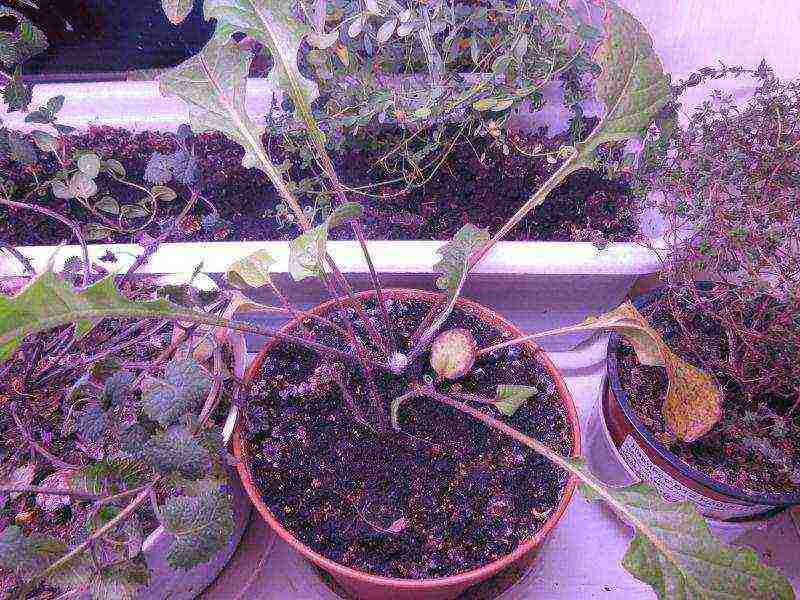
Gerbera leaves turn yellow in three cases.
- Excessive moisture. If the flower is regularly poured, there is a violation in its root respiration and yellowing of the leaves occurs. To solve this problem, it is necessary to reduce the intensity of watering, and allow the soil to dry out.
- Whitefly lesion. Treatment with a special preparation allows you to get rid of the pest.
- Spider mite. Another pest that causes the plant to turn yellow. To eliminate the problem, the leaves are sprayed with clean water several times. When this does not give the desired result, the flower needs to be treated with a special preparation from the pest.
It is very important to timely detect and eliminate the reason why the leaves turned yellow. If you restore the normal state of the flower in a timely manner, then it will release new leaves and bloom in due time.
How to achieve lush bloom?
If the gerbera has not bloomed in due time, you need to push it to this. To begin with, you should increase the light intensity, and slightly increase the soil moisture. Then fertilization with potassium and phosphorus will be required.
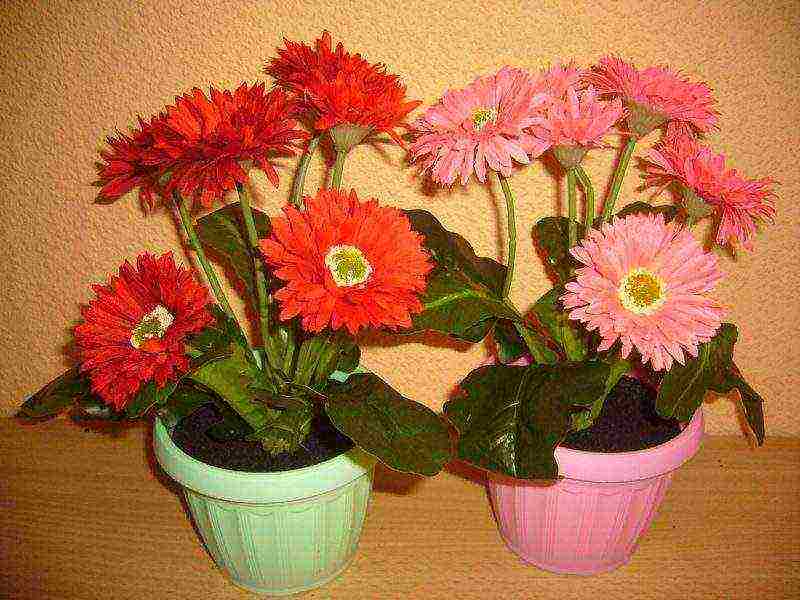
You should also carefully consider the flower rosette and soil. If mold or pests are found, they must be treated. Regardless of the variety, this will be the impetus for active flowering.
Diseases and pests of gerbera
Growing gerbera is usually not difficult, but sometimes the plant can be affected by pests or diseases. Of the diseases, fusarium most often occurs. With this problem, the leaves dry out, and if urgent measures are not taken, the gerbera dies. It is not difficult to treat the flower and it is enough to shed the soil with a weak solution of manganese.

- After being outdoors, gerbera can encounter powdery mildew, which looks like a white coating on the leaves. The disease is treated with a weak solution of manganese, which is sprayed on the plant.
- Among pests, gerberas can be attacked by whiteflies, spider mites and scale insects. To get rid of them, the flower is treated with a targeted drug.
- Having provided his gerbera with proper care, the owner gets the opportunity to admire the beautiful flowers for more than one year.
Gerberas are perennial representatives of the flora that belong to the Astrov family. The inflorescences of plants are baskets resembling chamomile. In diameter, they can reach 15 cm. Gerbera leaves are collected in a rosette near the root. The peduncle is large, reminiscent of a dandelion. There are many varieties of plants that differ in color and size of inflorescences. Gerbera at home requires a lot of attention and proper care. It is best cultivated in greenhouses and outdoors. But dwarf compact varieties are successfully grown at home.
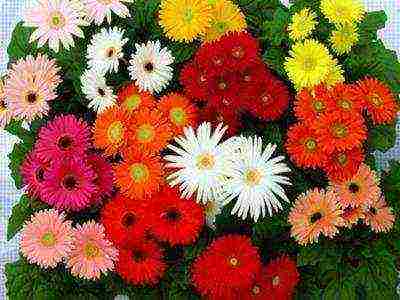 Gerbera at home
Gerbera at home
After the purchase, the plant should be transplanted into a large pot no earlier than two weeks later, otherwise it will be painful. Slightly acidic soils are best for gerberas. You can prepare the soil yourself. To do this, you need to take two parts of sand, one part each of leafy soil, peat, sphagnum moss and mix it all. There should be good drainage at the bottom of the pot. Gerbera at home needs regular feeding. For this, solutions of mineral complex fertilizers are best suited, since this representative of the flora does not tolerate organic fertilizers. For the first time, it is better to feed the plant 20 days after transplanting.
Gerbera is very fond of warmth and light. Therefore, at home, it is better to place it on windowsills from the southeast and east sides. In extreme heat, this representative of the flora needs light shading, because the foliage can lose its brightness. Gerbera at home needs a warm and humid regime. The temperature should not be lower than +18 ° C. The room should be regularly ventilated, and the air around the plant should be periodically humidified with a spray bottle. This representative of the flora is not afraid of drafts, so you can safely take it out onto the balcony. Use warm water for irrigation. The soil does not need to be waterlogged. It is very important that no water gets onto the flower outlet when watering. With proper care, gerberas develop well at home. Photos of these plants can be seen in this article.
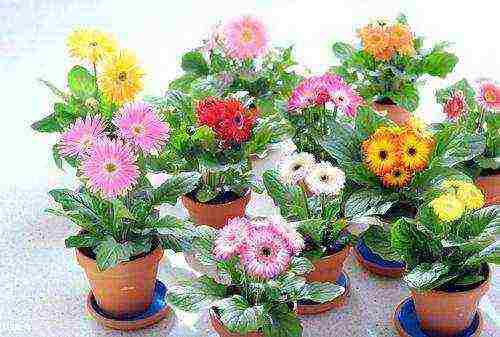
Flowering periods
Gerberas have two intervals of active growth and flowering per year. The first one starts around February 15th and ends at the end of May. At this time, it is advisable to feed the representative of the flora with a mineral complex for indoor plants. Withered flowers must be removed regularly, completely breaking them out of the nest, since the remaining parts of the peduncle can rot and infect the entire body. The second period of growth lasts from the 3rd decade of August to October. However, timely feeding and additional lighting can sometimes extend this time to the winter months, although it is more advisable to give the gerbera a rest and gain strength. In winter, the plant is not fertilized, watered no more than once a week, and the temperature is maintained at 10-12 ° C.
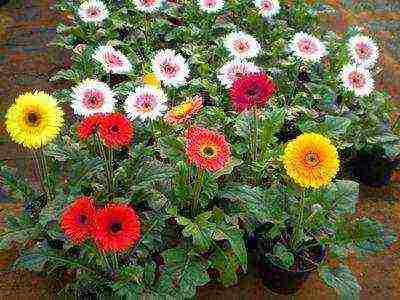
Transplant and reproduction
In order for this representative of the flora to regularly please with its flowering, it must be rejuvenated twice in a three-year period by dividing the bush (one of the methods of reproduction) and transplanted into a new disinfected soil. Then gerberas will develop correctly at home. Their reproduction, in addition to dividing the bush, can still be carried out by seeds and cuttings. The transplant should be done before active periods (February or July).

